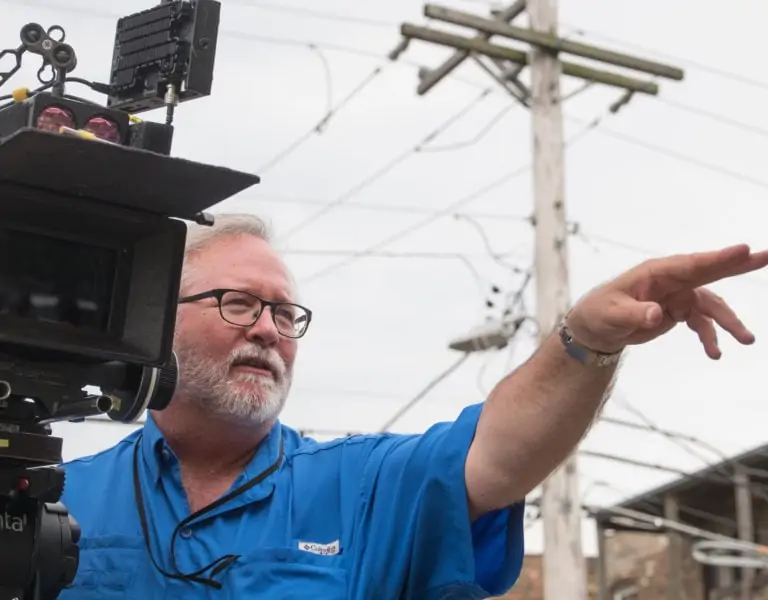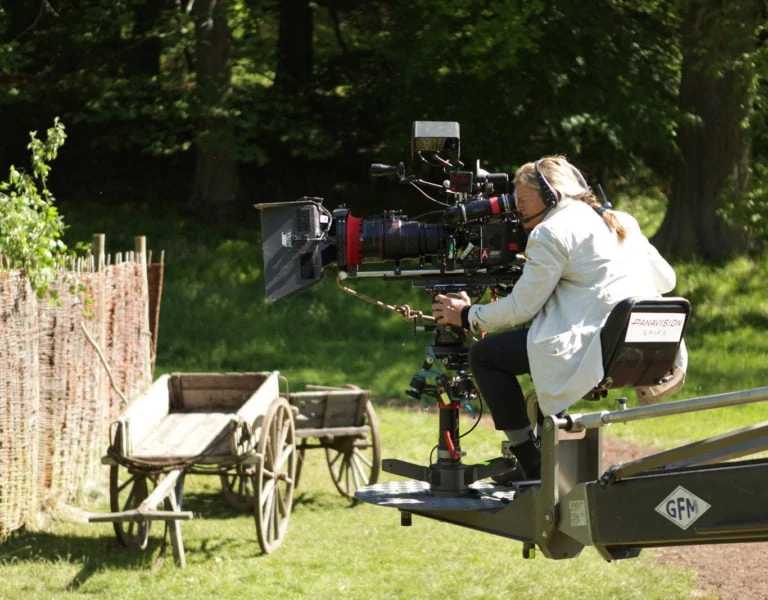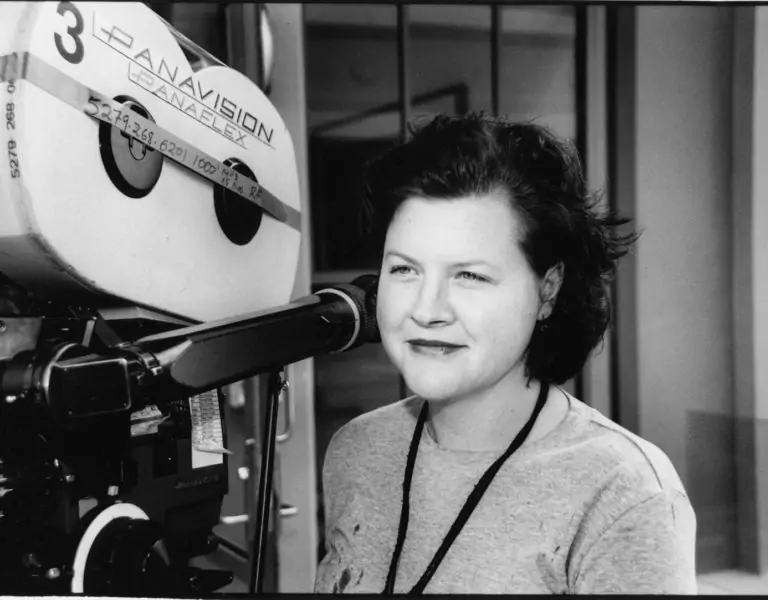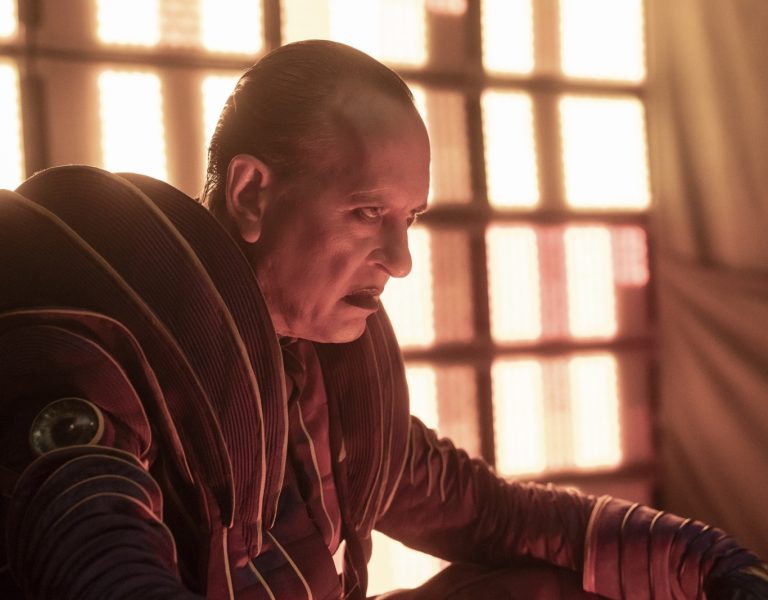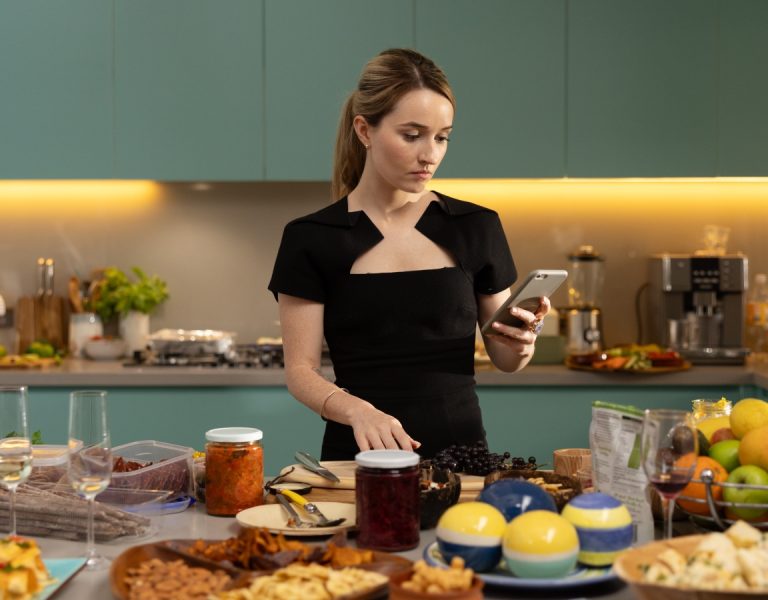ARTS AND CRAFTS
Selected filmography so far:
Film: Layla (dir. Amrou Al-Kadhi, 2024); Pili (dir. Leanne Welham, 2017)
TV: American Horror Story S3 (2023) – “Daphne” (dir. Elegance Bratton) and “Organ” (dir. Petra Collins); School Spirits S1 (2023) – episodes one and two (dir. Max Winkler)
What inspired you to become a cinematographer?
I was a very creative kid. I liked to paint models, draw, write and perform. I was glued to the TV. When I was 11, I saw The Lord of the Rings at the Walsall Showcase Cinema. It was there that I made up my mind: I wanted to make movies.
I was a pretty determined child. I made films with friends on the Hi8 home movie camera; even as a teenager I saw the power it had to bring people together, to create magic and a sense of community.
Where did you learn your craft?
I was fortunate enough to get a scholarship to the NFTS in 2012. I was quite raw when I arrived at the school, as I was 21 when I started. I had only really made passion projects: shorts on 16mm that I saved up to make. I’m thankful the school saw promise in me and over the two years there I found my feet and caught up technically. I owe a lot to the attitude and care of Stuart Harris BSC, who treated me more like a nephew than a student.
What are your favourite films, and what makes them stand out to you?
Magnolia (dir. Paul Thomas Anderson, cin. Robert Elswit ASC, 1999); Thelma & Louise (dir. Ridley Scott, cin. Adrian Biddle BSC, 1991); Cape Fear (dir. Martin Scorsese, cin. Freddie Francis BSC, 1991); and Kids (dir. Larry Clark, cin. Eric Edwards). These are four films that even when I think of them I feel something: sadness, excitement, dread, joy. They’re boundary pushing, inventive, tonal, full of risk and heart and life.
Who in the film world inspires you?
I’m hopeful that Nathan Fielder will write a feature. The Curse was one of the most unusual and uncomfortable TV shows I’ve ever seen and I loved every episode. I’m a huge fan of his perspective and humour.
What’s the most useful advice you’ve received and from whom?
“Same place as the music”: Andrew Leslie ASC. There’s a famous story of Andrew knocking a hole through a set on The Lord of the Rings to bring a shaft of light through. He was asked where the source is coming from and he replied: “Same place as the music”.
I think about this a lot when I’m lighting. I used to be restricted by the idea of the ‘source’ and capturing or recreating a sense of realism in my lighting. These days I’m a lot more relaxed and try to use the lighting as another tool to tell the story.
What advice would you give someone considering becoming a cinematographer?
Be patient and present. It’s easy to look on socials and feel like people are having overnight success and feel you need to rush. In reality, there have been years of unseen, uncelebrated growth to reach those positions. Be present with the project you’re on and give that your best. The growth will happen as a consequence of the right effort. That effort will bring you onto your next project. If you’re present and excited, joyful and engaged in your craft then the work will come.
What have been your greatest triumphs and disasters on set?
Pili (2016) getting nominated for a BAFTA is still one of my biggest triumphs. We made the film on a budget of £150k with a five-person team. Shooting on location in Miono, Tanzania. There were no actors; only local people and no professional lights. It was run and gun, as indie as you could get. For it to be nominated and shed a light on the village, its people and their stories was beautiful.
As for disasters, I fractured my knee on feature film Layla in 2022 chasing drag queens around London. That took me off my feet for a few months; which in some respects had it’s benefits.
What lights your fire outside of work?
My wonderful fiancée, my friends, boxing, yoga, Warhammer 40,000 (which takes up most of my time when I’m not working), writing, travel, music festivals, and cooking. I have a lot of hobbies to keep me grounded when I’m not working.
What has been the biggest challenge in your career and how did you overcome it?
I love my craft, but we’ve been conditioned to believe we need to be working relentlessly, one project to the next, grinding away. Earlier in my career I was non-stop, jumping from one show to the next, chasing projects, I had a drive that pushed everything else to one side.
As I’ve gotten older and hopefully wiser, I recognise now the value in stepping away, taking time, letting the work unfold and not chasing or grasping too tightly. It’s allowed me to be more excited and present with what’s in front of me, inside and outside of the work.
What piece of kit could you not live without?
Rota Pola. It’s magic and can completely change the quality of a shot.
Which film would you love to have shot?
Synecdoche, New York (dir. Charlie Kaufman, cin. Frederick Elmes ASC, 2008). I would have loved to work with Philip Seymour Hoffman, he was such an inspiration to me. This project is drenched in existential dread, with a beautiful and bonkers set, and I’d have loved to have been part of it.
Which productions are you most proud to have lensed, and why?
Layla, directed by Amrou Al-Kadhi. Premiering this at Sundance this year really drove home how important representation is. All weekend we had people coming forward saying they had never seen a queer, Arab person as a strong and complex lead character before. I’m very proud to have built this world with Amrou and shone a light on their story.
What’s the best and worst thing about your job?
The community and family you create in your bubble. I love how within a week of being together on a new project how quickly people come to trust, care and support one and other. It’s a circus family.
The worst thing would have to be the hours, no doubt; especially in the states, crew tell me they’ll have had four hours of sleep before getting back in their cars and driving back to set.
How would you best describe your approach to cinematography?
Story focused, emotionally driven, patient and present.
What are your aspirations for the future?
I hope I get to continue telling stories that have an impact, stories that push conversation and open people’s eyes to different perspectives. Being part of projects that have a real purpose like that is something that lights a fire under me.
What do you think are the industry’s biggest challenges?
AI, no doubt. But on a more personal level it’s the ever-shrinking opportunities for true indie films. It feels impossible right now to get something made without a big star attached or a superhero flying around on screen. It’s been getting harder and harder to make smaller, more personal and riskier films.
